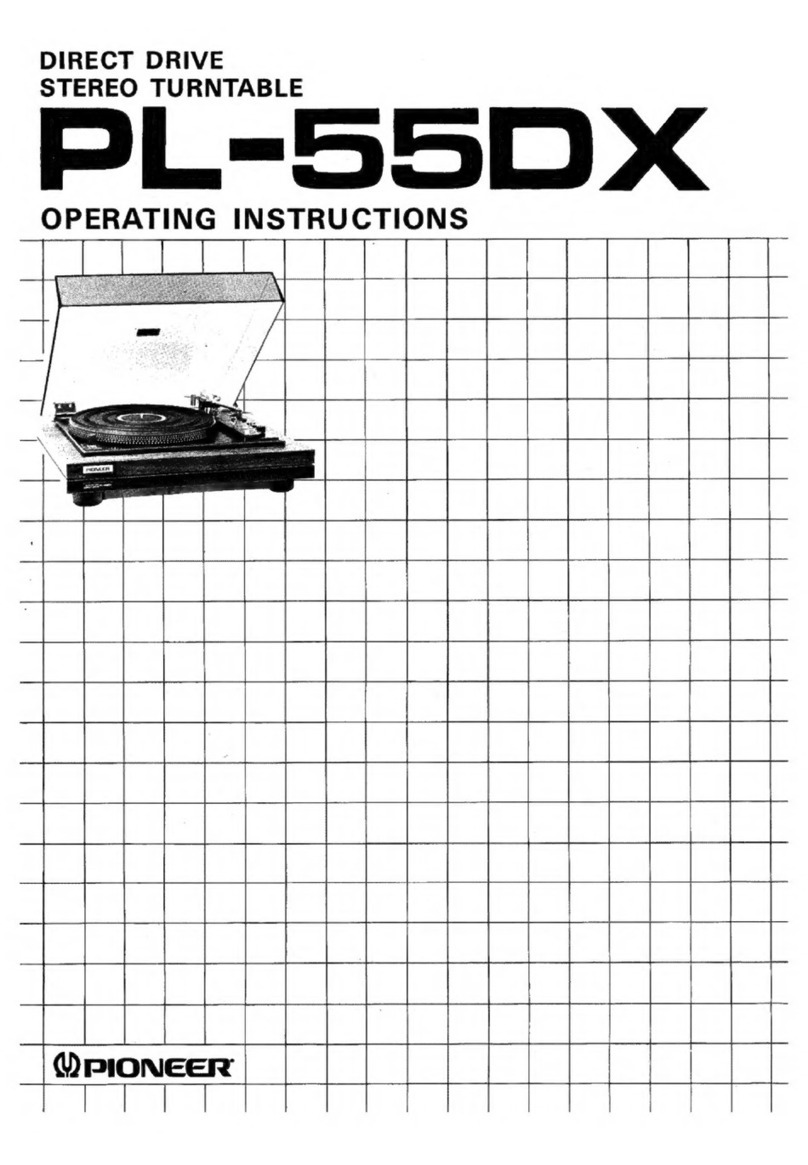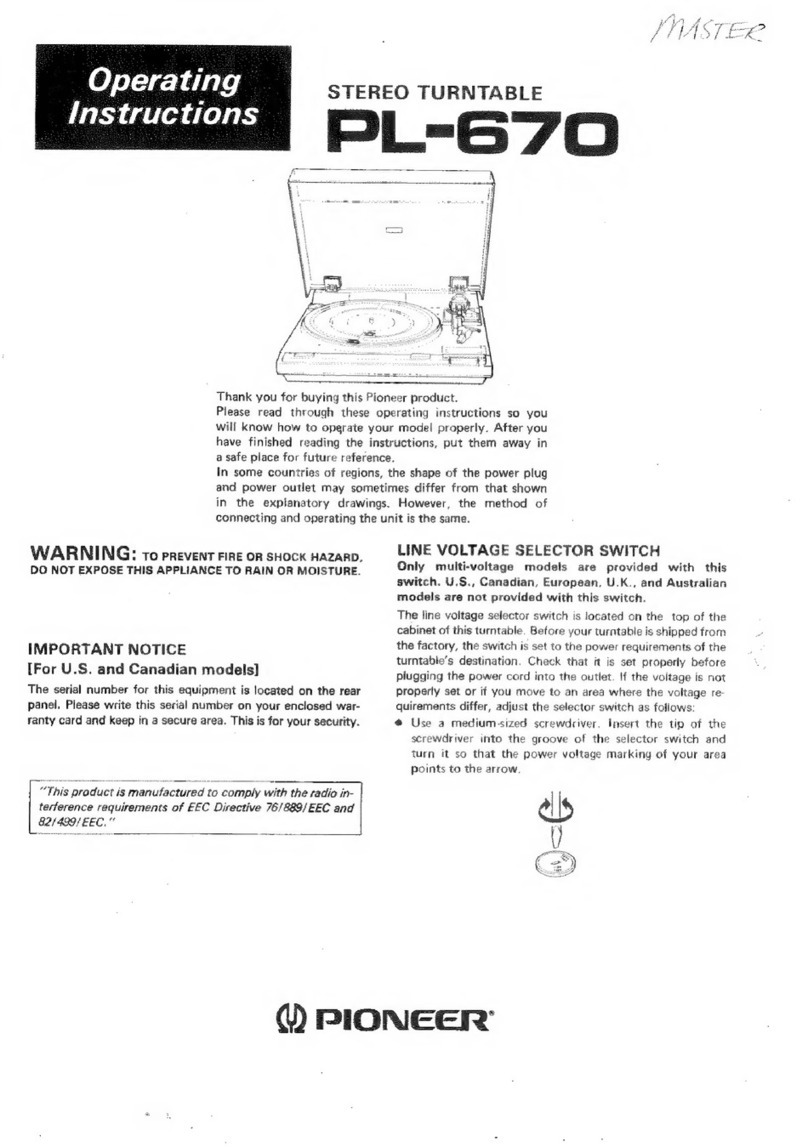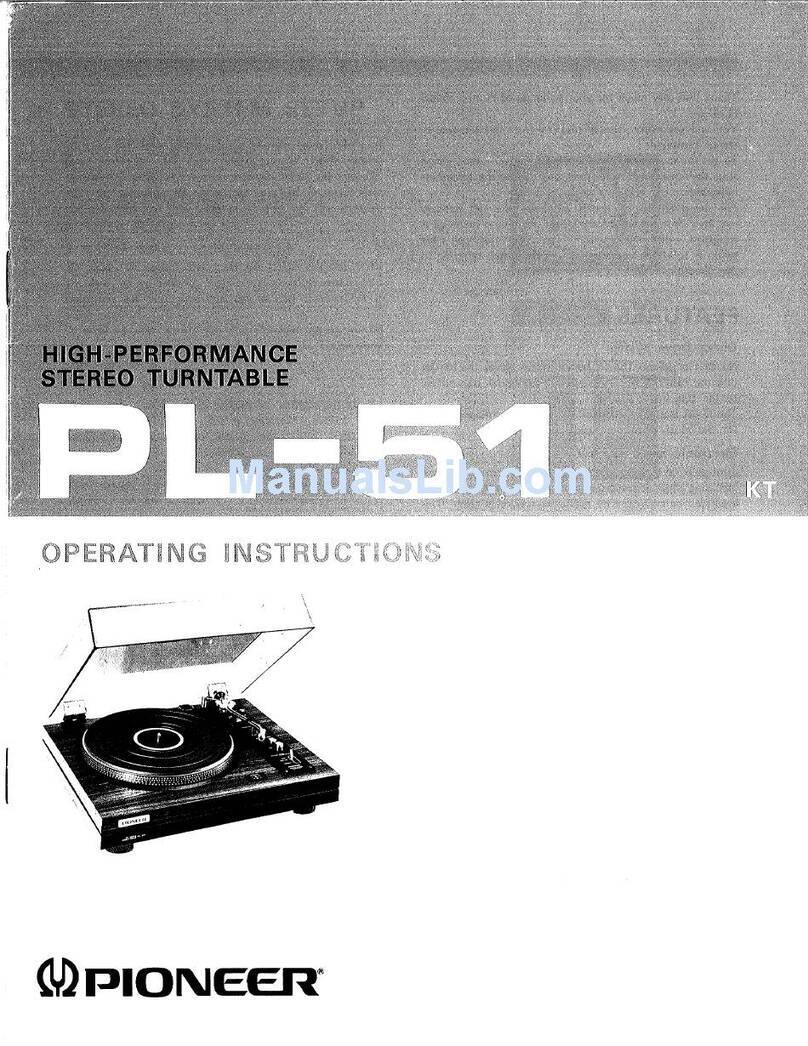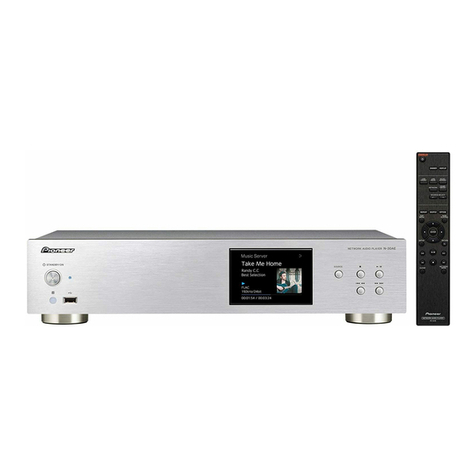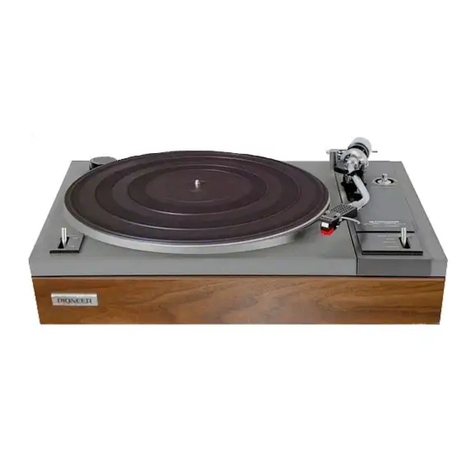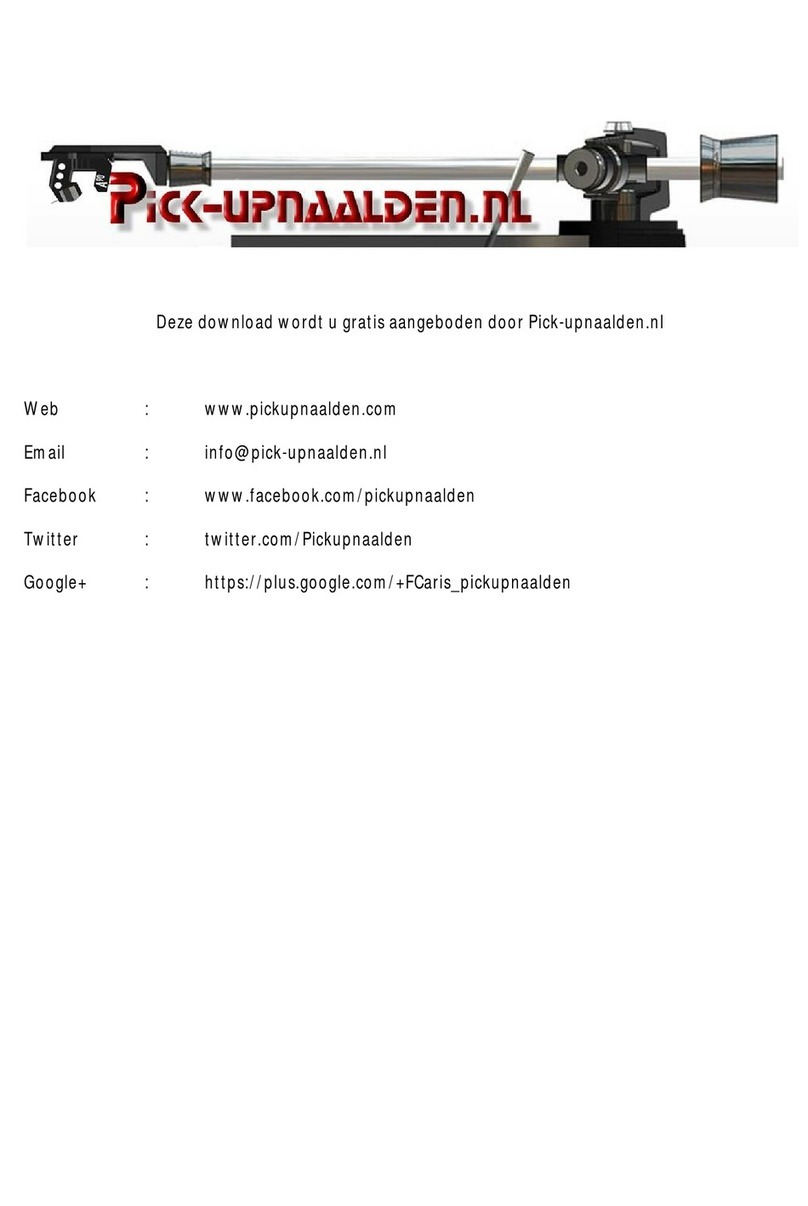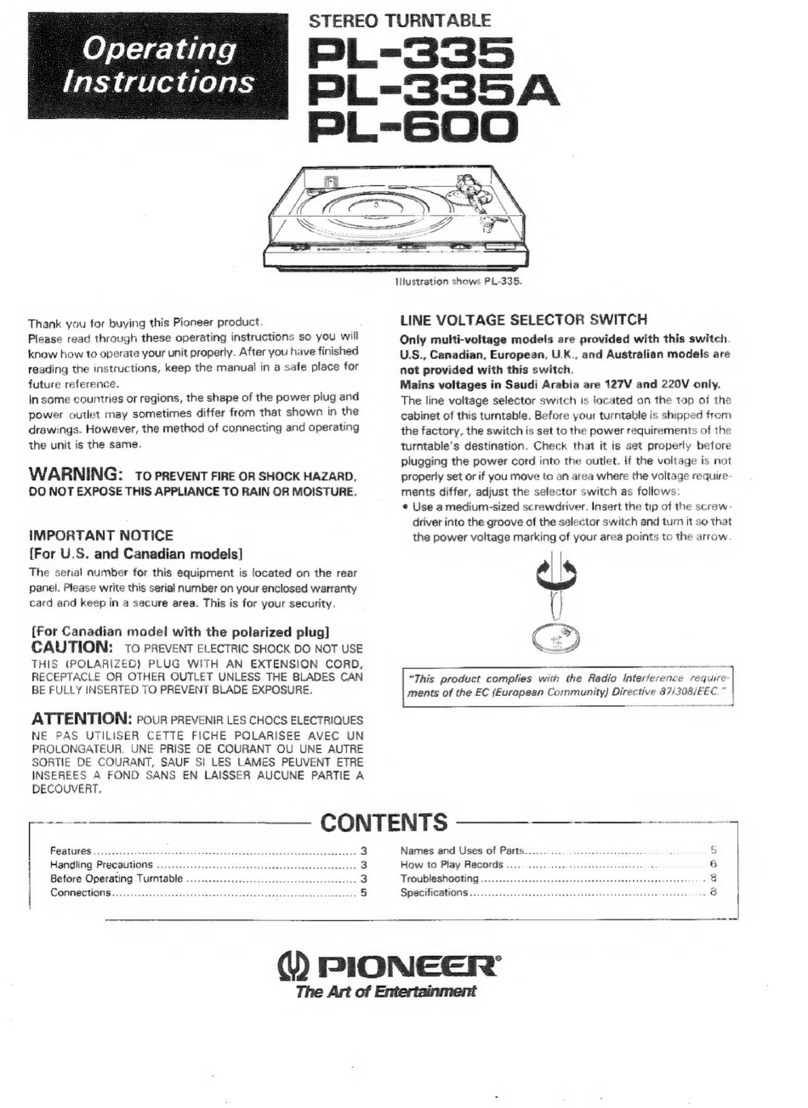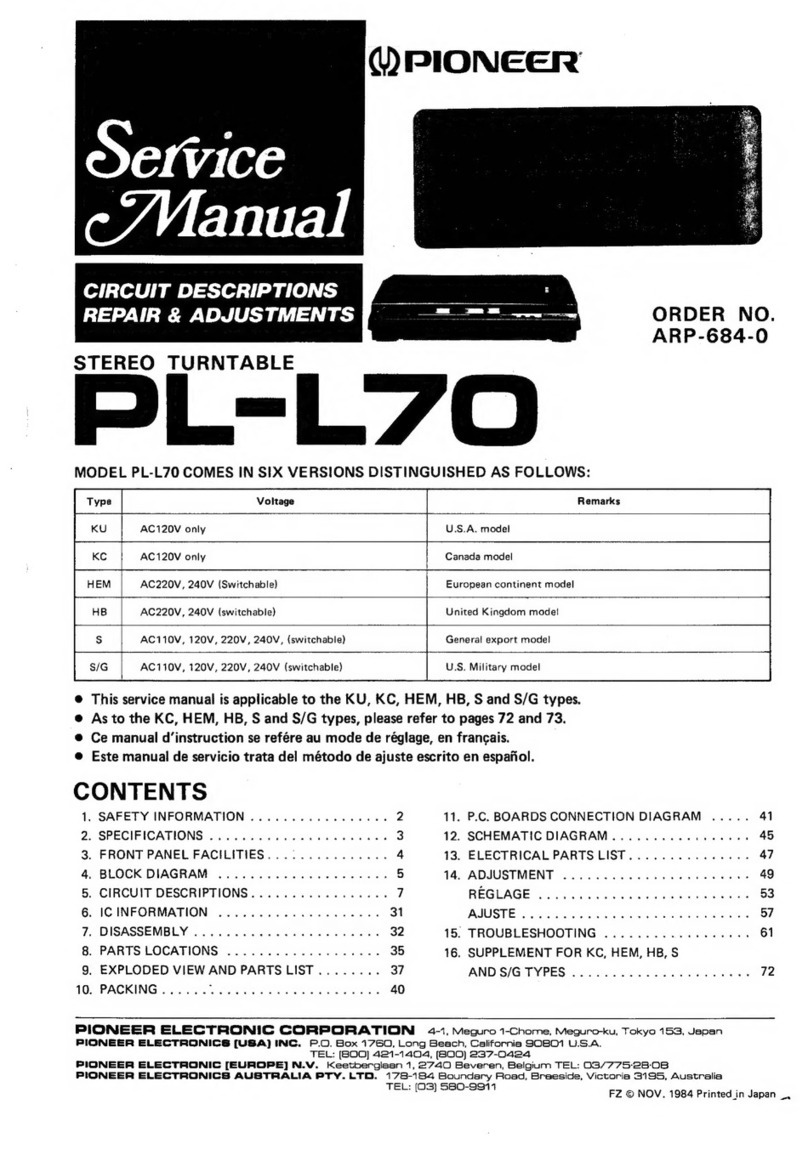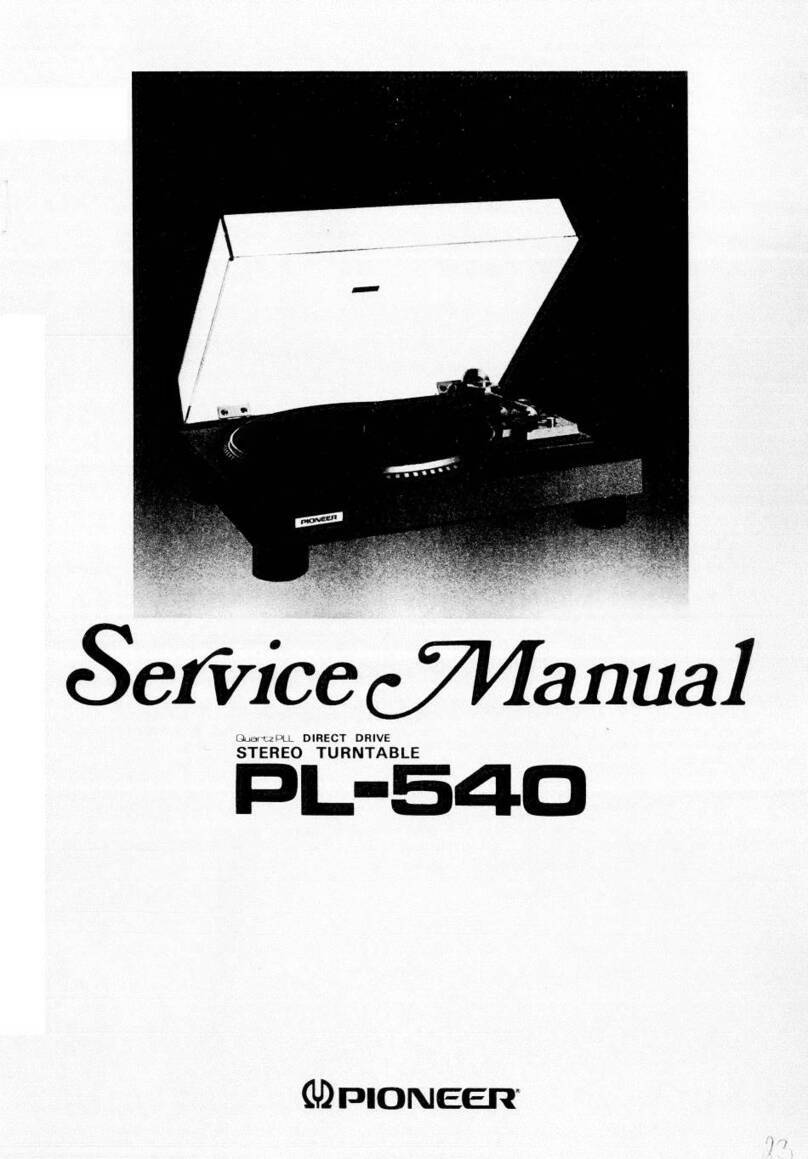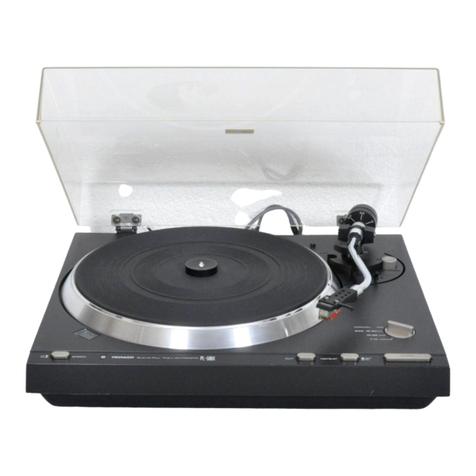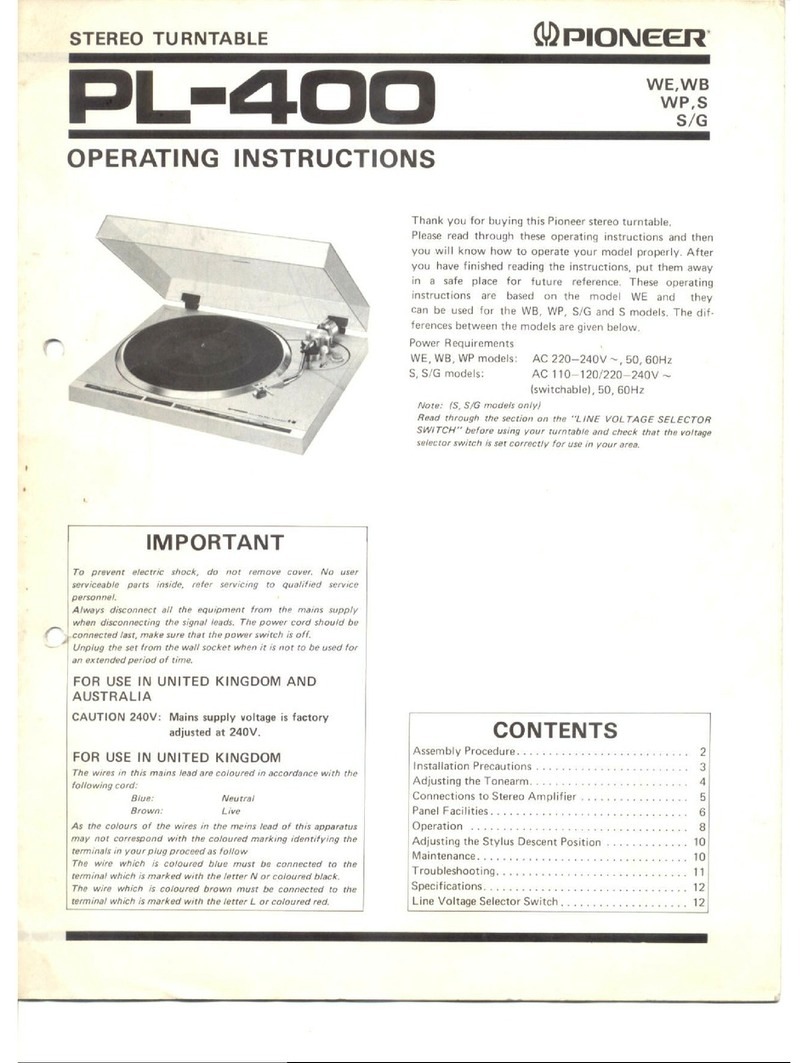
The PL-117D is a high precision fully automatic
turntable designed to be incorporated into a com-
ponent type stereo music system. lt is recom-
mended that you read these Operating lnstructions
completely before using the turntable.
The PL-1 17D is prelubricated at the factory, but the
oil may have dried up during shipment. Therefore
apply a few drops of the accessory oil before use as
described on page 11.
CONTENTS
PL-117D Features 2
AttachingtheCartridge.... 3
Assembly Steps . 4
Component Locations 5
TonearmAdjustments.... 6
Stereo Amplifier Connections . . . . . . . 7
DustCover ...... 7
PanelFacilities.. 8
Operation ....10
CareofYourTurntable .. .... 11
Conditions Frequently Mistaken for
Malfunction .....L2
Specifications... ....13
PL.117D FEATURES
Easy to Use Full Auto Mechanism
Simply place a record on the turntable and press the START
button. The full auto mechanism then proceeds to smoothly and
effortlessly play the record. With the precision of a fine watch, the
platter starts to rotate, the tonearm moves into position, and the
stylus lowers itself slowly and gently onto the record surface. At
the end of the record, the tonearm is raised, returned to the arm
rest, and then platter drive and power are automatically cut off.
Since there is virtually no manual handling of the tonearm, both
records and stylus are protected from accidental damage. A repeat
function is also included which can be employed to play the same
side of the record repeatedly until it is disengaged by pressing the
STOP button.
Operate Manually When Desired
Manual play can also be easily performed by simply positioning the
tonearm over the desired portion of the record manually. Platter
rotation begins automatically and the tonearm can then be lowered
onto the record by operating the arm elevation lever. At the end of
the record, the tonearm becomes automatically raised and returned
to the arm rest. The simple act of playing a record has become even
simpler, letting you enjoy the full richness of recorded music while
safeguarding your listening room library.
Precision Belt Drive with 4-pole Synchronous Motor
Stable rotation of the 30cm diecast aluminum alloy platter is
maintained by the carefully engineered 4-pole synchronous motor
and belt drive system. The smooth running of the motor is
unaffected by fluctuations in line voltage and load, while even the
slightest vibrations from the motor are absorbed by the poly-
urethane belt. High performance is exemplified try the 0.07%
(WRMS) wow and flutter, and 50dB (J lS) signal to noise ratio.
High Sensitivity S-shaped Tonearm
The tonearm gimbal incorporates high precision angular contact
bearings, whose low vibration and friction ensure high sensitivity
together with long term reliability. Anti-skating and lateral balance
controls are included for optimum performance with high com-
pliance cartridges and light tracking forces, and the direct readout
of the tracking force is especially convenient when replacing the
carlridge.
Numerous Additional Features
A host of additional features enhance the convenience and per-
formance of the PL-l l7D. Among these are a lightweight, high
rigidity aluminum headshell, low capacitance output cord, and
an oil-damped tonearm elevation mechanism to protect valuable
records and stylus. The interior of the cabinet is lined with
aluminum foil to screen out external electrical noise which is often
picked up from other household appliances, while motor and
external vibrations are also isolated by the double suspension
design.
